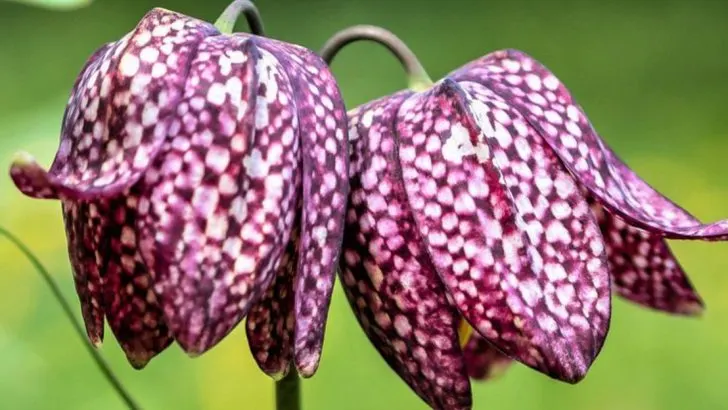When you think of spring flowers, classics like tulips, daffodils, and crocuses likely come to mind. While these iconic blooms certainly have their charm, there are many underrated spring flowers that deserve just as much attention. These hidden gems offer unique beauty, vibrant colors, and interesting textures that can transform your garden into a captivating spring oasis.
If you’re looking to stand out this season, these 18 spring flowers are the perfect way to refresh your garden with something different. From delicate blooms to bold and vibrant ones, these flowers are not only visually stunning but also often easier to grow than the more popular varieties.
In this article, we’ll introduce you to 18 underrated spring flowers that will bring a fresh, exciting twist to your garden. Whether you’re a seasoned gardener or just starting out, these flowers are sure to add beauty and variety to your spring landscape while helping you avoid overcrowding with the usual suspects.
Lungwort
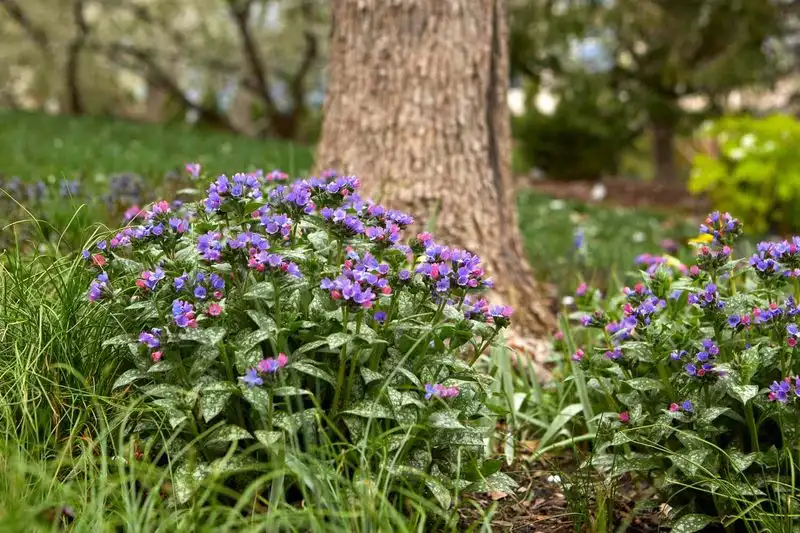
Lungwort, with its captivating clusters of blue and pink blooms, brings a unique charm to any spring garden. Known for its spotted foliage, this perennial thrives in shady corners, making it an ideal choice for under trees or along shaded pathways. Its flowers start as pink and gradually turn blue, creating a mesmerizing color gradient. Attracting bees and other pollinators, Lungwort supports a healthy ecosystem. For gardening enthusiasts, its low-maintenance nature ensures it remains a delightful presence year after year, requiring only minimal upkeep. Consider pairing with ferns for a textured, woodland-inspired garden.
Grecian Windflower
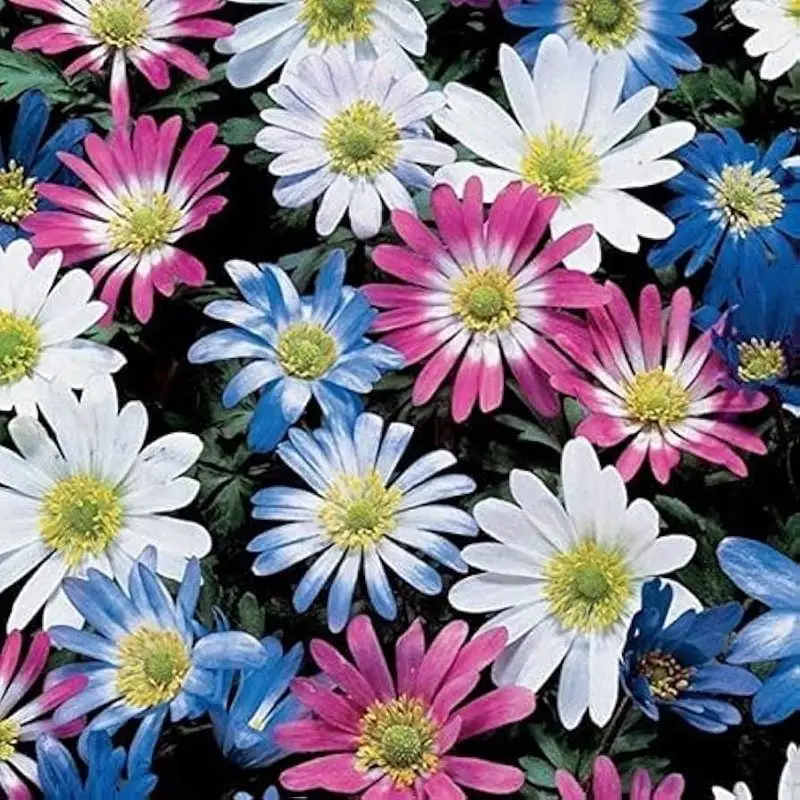
Grecian Windflowers bring a splash of vibrant color with their daisy-like blooms in shades of blue, white, and pink. These hardy perennials flourish in well-drained soil, making them perfect for naturalizing in rock gardens or beneath deciduous trees. As one of the first flowers to bloom in spring, they herald the end of winter with cheerful blossoms. Their delicate appearance belies their resilience, as they can withstand early spring frosts. To maximize their impact, plant in large clusters where their vivid colors can create a breathtaking display that captivates the senses.
Snowdrop Anemone
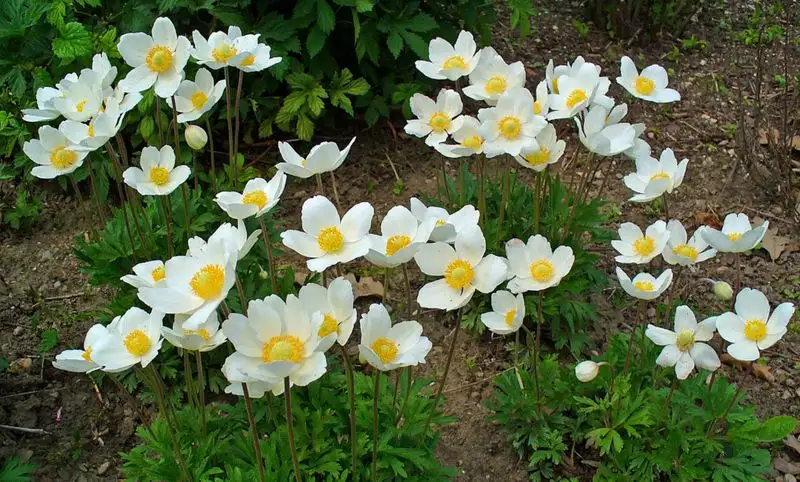
Snowdrop Anemones offer a delightful nod to spring with their crisp white petals and sunny yellow centers. These perennials are perfect for naturalizing in woodland gardens, where they add a touch of elegance. Blooming from late spring into early summer, they fill the garden with a subtle fragrance. Their adaptability to various soil types makes them a versatile choice for gardeners. Snowdrop Anemones spread gently over time, creating a soft carpet of blooms. Pair with early spring bulbs for a layered floral tapestry that enchants both the eye and the soul.
Virginia Bluebells
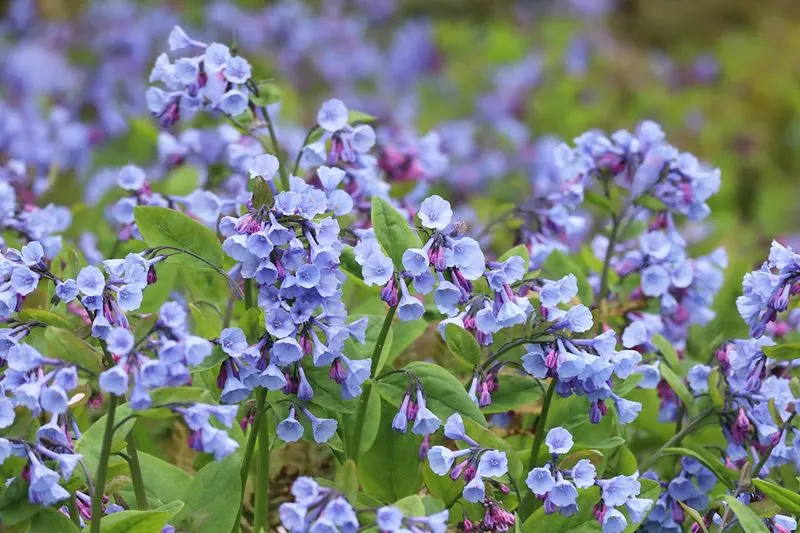
Virginia Bluebells are a harbinger of spring, with their bell-shaped flowers transitioning from pink buds to vivid blue blooms. These native perennials thrive in moist, rich soil and do well in shaded areas like woodland gardens. They create a dramatic display, especially when planted in large groups. Their ephemeral nature means they will go dormant by midsummer, making room for other plants to take center stage. The delicate beauty of Virginia Bluebells attracts pollinators, adding life to your garden. Consider planting alongside wild ginger for a harmonious woodland scene.
Spanish Bluebells
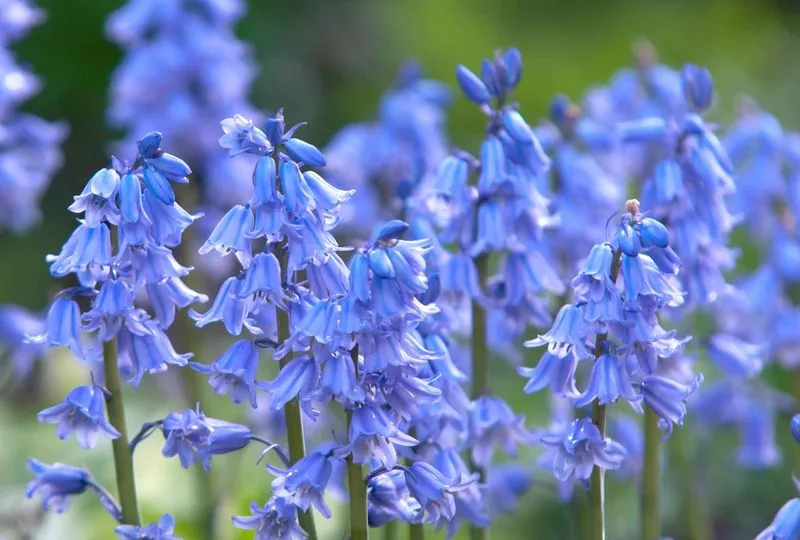
Spanish Bluebells enchant with their elegant spikes of blue, pink, or white flowers, adding a burst of color to any garden. These bulbs are incredibly versatile, thriving in both sun and partial shade, and can naturalize easily in a variety of settings. Their strap-like leaves provide a lush backdrop to their vibrant blooms. As a bonus, they are deer-resistant, offering a hassle-free addition to your garden. Spanish Bluebells blend well with other spring bulbs, creating a harmonious floral display that is both captivating and easy to maintain.
Glory of the Snow

Glory of the Snow lives up to its name with starry blooms that appear even when the last snow may still linger. These early bloomers are perfect for rock gardens or along borders, showcasing a palette of blue, white, and pink. Their ability to withstand cold temperatures makes them invaluable for extending the spring season. Glory of the Snow is low-maintenance and multiplies over time, forming charming colonies that return each year. Pair with early tulips for a striking contrast that enhances both their beauty and the overall aesthetic of your garden.
Siberian Squill
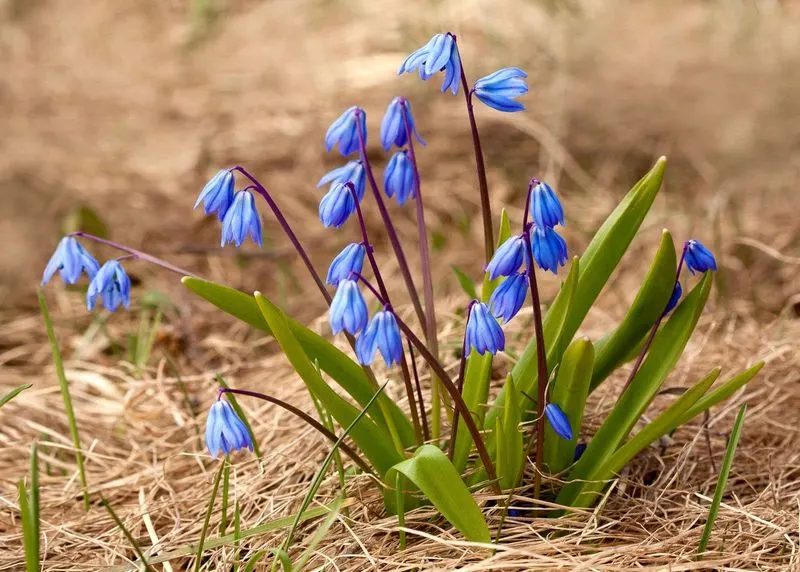
Siberian Squill is a petite powerhouse, offering a sea of blue flowers that carpet the ground in early spring. These bulbs are hardy and require minimal care, making them ideal for naturalizing under trees or in lawns. Their vibrant blue petals create a vivid visual impact that draws the eye. As a bonus, they attract pollinators like bees, contributing to a healthy garden ecosystem. Siberian Squill is an excellent choice for those looking to add color without the fuss. Mix with white snowdrops for a classic and timeless spring tableau.
Checker Lily
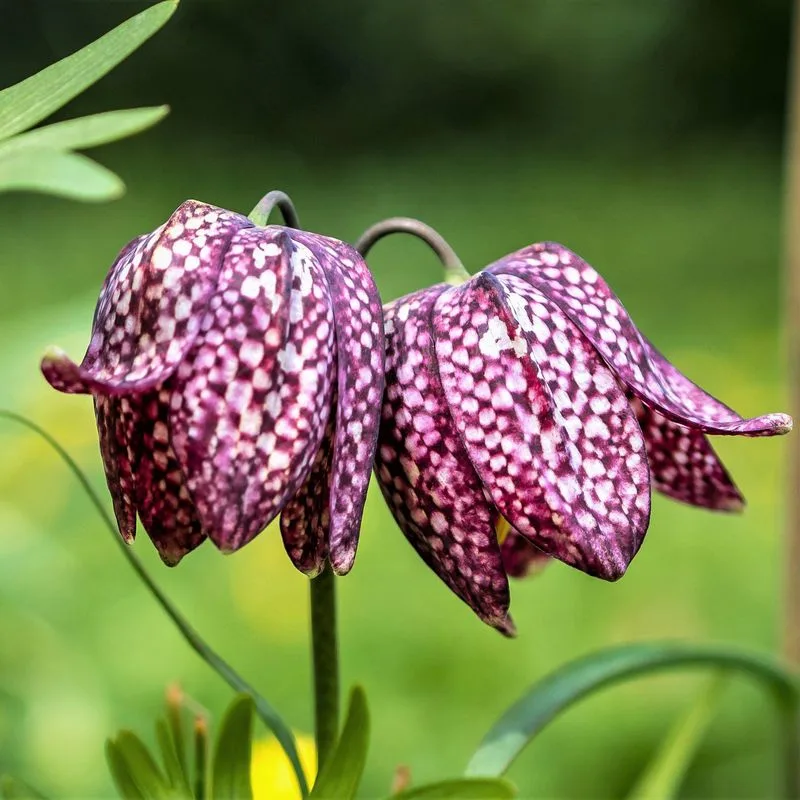
With their distinctive checkered pattern, Checker Lilies are a standout choice for adding intrigue to any garden. These bulbs prefer moist, well-drained soil and thrive in partially shaded areas, making them perfect companions for ferns and hostas. Their nodding, bell-shaped flowers add a whimsical touch, while their unique pattern captivates garden visitors. Despite their delicate appearance, Checker Lilies are resilient and can adapt to various growing conditions. For a stunning visual effect, plant them in groups where their intricate patterns can be appreciated up close, creating a garden feature that is both elegant and enchanting.
Corydalis
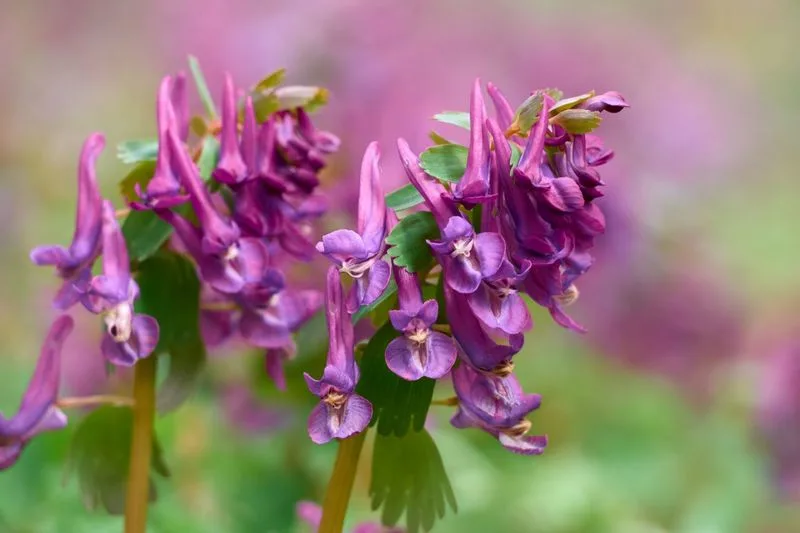
Corydalis is a delightful addition with its fern-like foliage and bright yellow or blue flowers. These perennials thrive in well-drained soil and prefer partial shade, making them ideal for shady borders or woodland gardens. Corydalis blooms profusely in spring, adding a burst of color that catches the eye. Its foliage remains attractive throughout the growing season, providing a consistent backdrop for other plants. Due to its spreading nature, Corydalis can fill in gaps effectively, offering both beauty and ground cover. Pair with hostas for a stunning textural contrast that enhances garden interest.
Star of Bethlehem
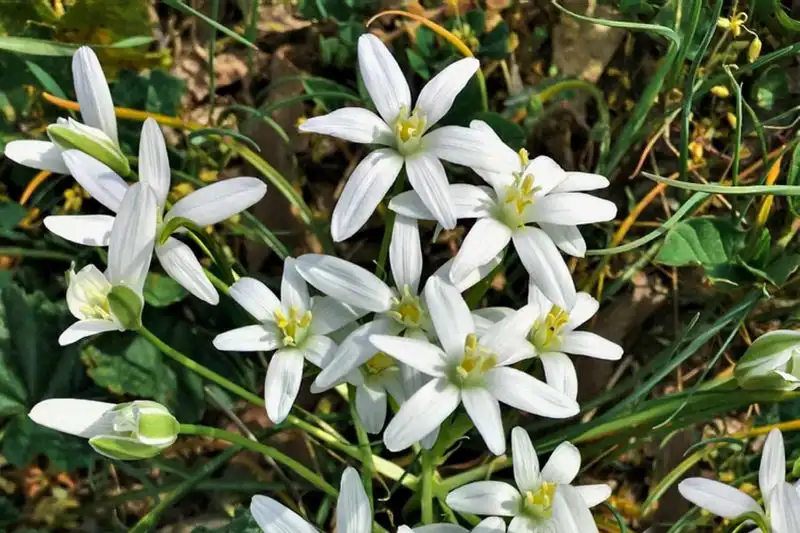
Star of Bethlehem dazzles with its starry white flowers that seem to light up garden spaces. This hardy bulb thrives in a variety of soils and prefers sunny to partially shaded locations. Its low-growing habit makes it ideal for borders or rock gardens where it can spread to form a floral carpet. Its blooms open in the morning and close at night, adding dynamic movement to the garden. Star of Bethlehem naturalizes easily, ensuring a return performance each spring. To highlight its starry blooms, plant alongside contrasting blue flowers like grape hyacinths.
Toad Lily

Toad Lilies offer an exotic flair with their orchid-like flowers and unique spotted patterns. These perennials thrive in shady, moist conditions, making them perfect for woodland gardens. Their late bloom time in fall provides a final burst of color before winter. Toad Lilies are easy to grow and care for, rewarding gardeners with their unusual beauty. Their intricate blooms invite close inspection, rewarding those who take the time to appreciate their detail. Pair with ferns and other shade-loving plants to create a lush and textured garden scene that captivates throughout the season.
Grape Hyacinth
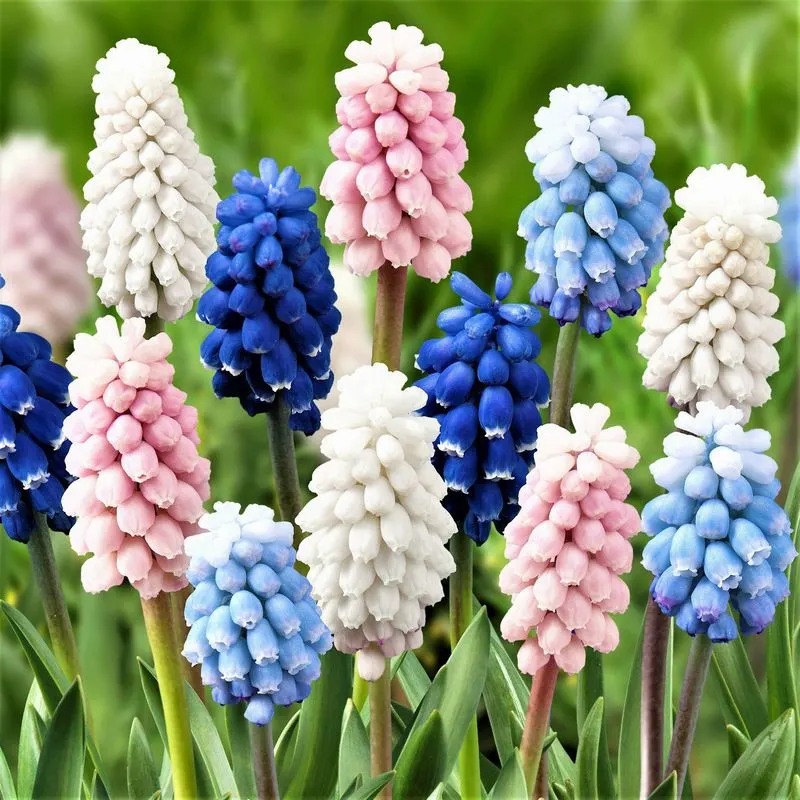
Grape Hyacinths pack a visual punch with their dense clusters of deep blue or purple flowers. These hardy bulbs are easy to grow and multiply rapidly, making them perfect for naturalizing under trees or along walkways. Despite their small size, they offer a powerful color accent that enlivens any garden. Grape Hyacinths are also fragrant, adding another sensory dimension to your outdoor spaces. For a striking effect, plant in masses where their vibrant hues can create a sea of color. Combine with daffodils for a classic spring duo that never fails to impress.
Foamflower
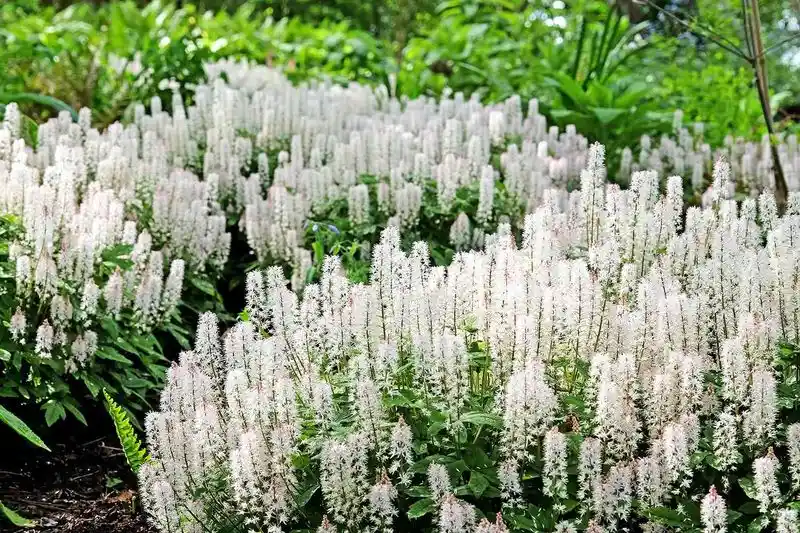
Foamflowers bring a frothy elegance with their airy white blooms and heart-shaped foliage. Perfect for shaded areas, they thrive in woodland settings or as ground cover in gardens requiring low light. Blooming in mid to late spring, they offer a delicate touch that complements bolder plants. Foamflowers are hardy and easy to care for, requiring minimal maintenance once established. Their foliage remains attractive even after flowering, providing year-round interest. Pair with hostas or ferns for a textured landscape that blends seamlessly into natural surroundings, creating a tranquil garden retreat.
Pasque Flower

Pasque Flowers captivate with their silky, purple blooms that emerge in early spring. These hardy perennials prefer well-drained soil and full sun, making them ideal for rock gardens or sunny borders. Their feathery foliage adds interest even when not in bloom. Pasque Flowers are not only beautiful but also resilient, able to withstand cold spring temperatures. They provide early nectar for pollinators, supporting garden biodiversity. For a breathtaking display, plant them in groups where their vibrant colors and unique textures can be appreciated. Pair with other alpine plants for a stunning rock garden ensemble.
Siberian Iris
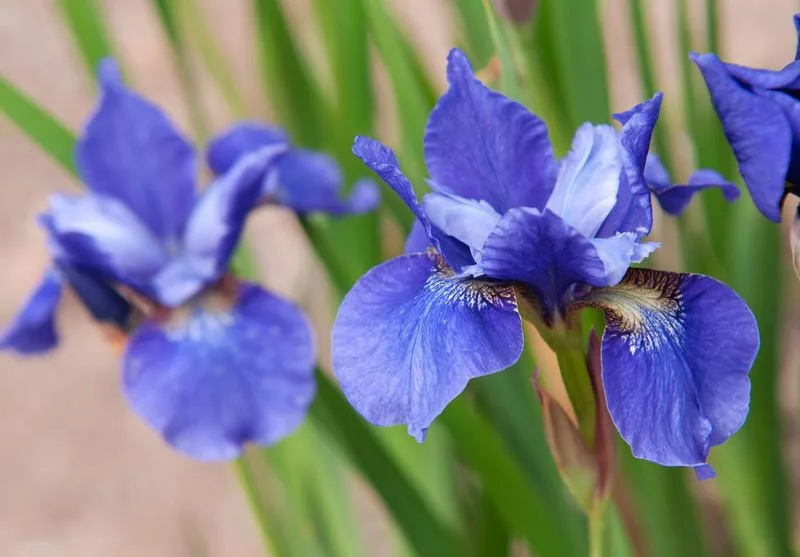
Siberian Iris adds grace with tall, slender leaves and stunning flowers in shades of blue, purple, and white. These perennials thrive in moist conditions, making them ideal for pond edges or damp garden areas. They are low-maintenance and drought-tolerant once established, offering beauty without demanding care. Their sword-like foliage provides structure throughout the growing season. Siberian Iris blooms in late spring, delivering a spectacular show that attracts bees and butterflies. For a dramatic effect, plant in clumps, allowing their elegant forms to sway gently in the breeze, creating a serene garden atmosphere.
Dutchman’s Breeches
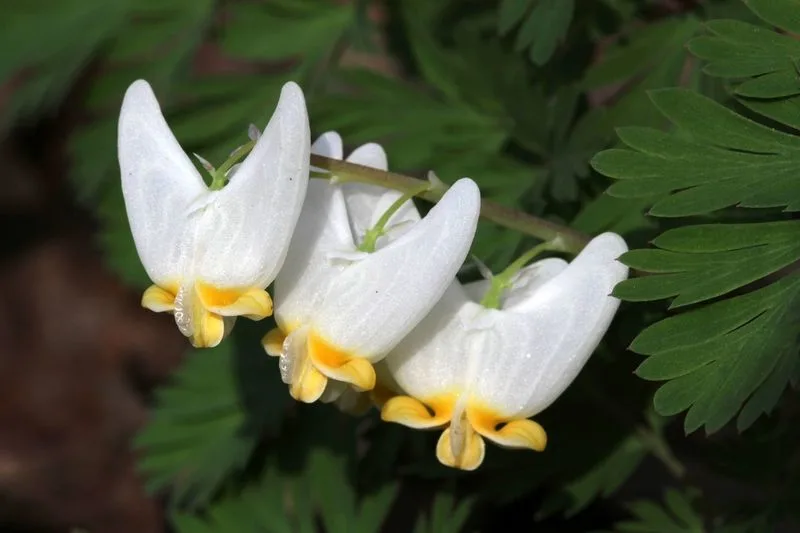
Dutchman’s Breeches intrigue with their pantaloon-shaped flowers that dangle gracefully from arching stems. These perennials prefer shady, moist areas and are well-suited to woodland gardens. Their early spring blooms are a delightful sight, offering nectar for early pollinators. Despite their delicate appearance, they are hardy and adaptable. Dutchman’s Breeches spread gently, creating a naturalized look in woodland settings. For a whimsical garden feature, plant alongside trilliums or ferns, where their unique blooms can be showcased. Their charming shape and nodding flowers invite curiosity and admiration from all who visit.
Virginia Bluebells
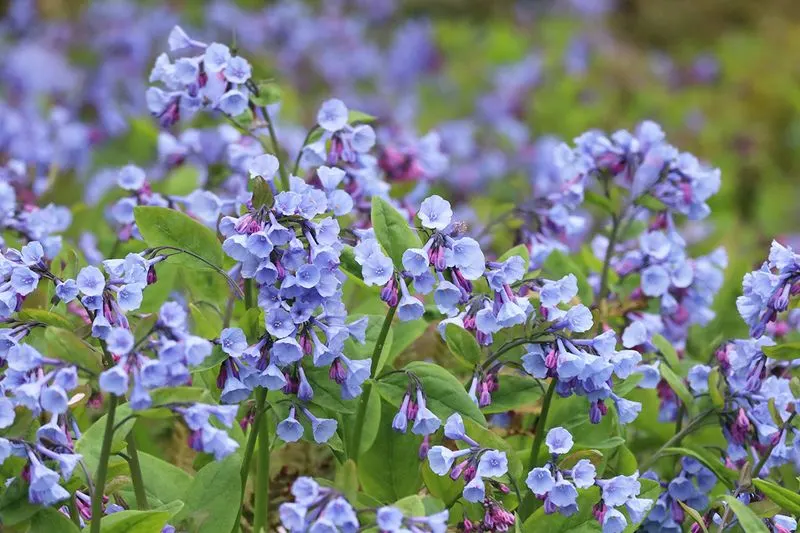
Virginia Bluebells are a harbinger of spring, with their bell-shaped flowers transitioning from pink buds to vivid blue blooms. These native perennials thrive in moist, rich soil and do well in shaded areas like woodland gardens. They create a dramatic display, especially when planted in large groups. Their ephemeral nature means they will go dormant by midsummer, making room for other plants to take center stage. The delicate beauty of Virginia Bluebells attracts pollinators, adding life to your garden. Consider planting alongside wild ginger for a harmonious woodland scene.
Yellow Trout Lily
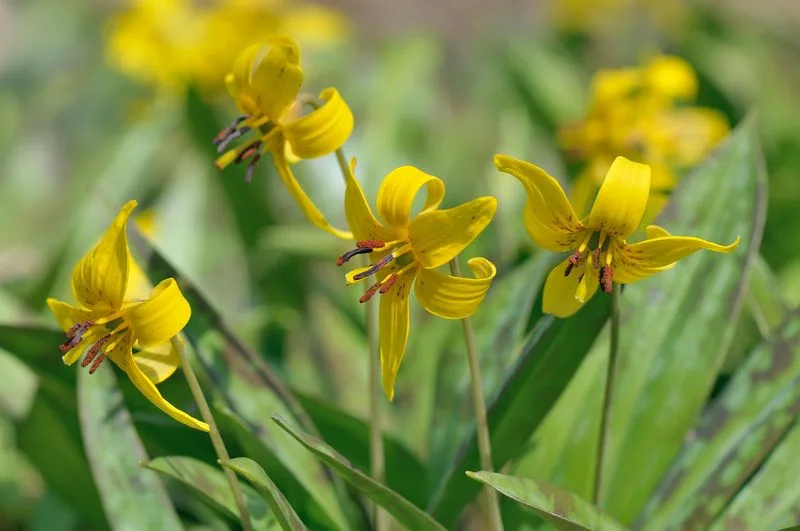
Yellow Trout Lilies captivate with their nodding yellow flowers and mottled leaves resembling trout skin. These early bloomers thrive in rich, moist soil and are ideal for woodland gardens. Their flowers emerge in early spring, providing a cheerful burst of color. Despite their delicate appearance, they are resilient and adapt well to shaded environments. Yellow Trout Lilies spread slowly by underground bulbs, forming charming colonies that return each year. For a harmonious effect, pair with other spring ephemerals like trilliums or bloodroot, creating a naturalistic garden that celebrates the beauty of spring.

